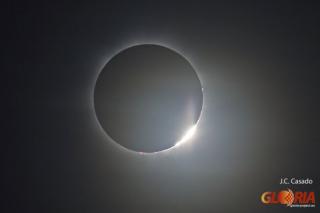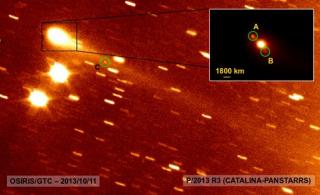On 3 November the forthcoming eclipse of the Sun will be a direcly transmitted from the SibiloiNational Park on the shores of Lake Turkana in Kenya.The duration of the eclipse will be 2h 14m (14:13-16:27 CET), and the event will be transmitted directly between 15:20 and 15:30 CET. Direct connection (Sunday, 3 November). Further information: Spanish press release VISIBILITY FROM EUROPE* The eclipse will be partial from the south of Europe. Maximum occultation will occur at 13:30 in Seville, 13:35 in Madrid, 13:50 in Barcelona, 14:20 in Catania (Italy) and 14:40 in Chania (Greece). all times
Advertised on



